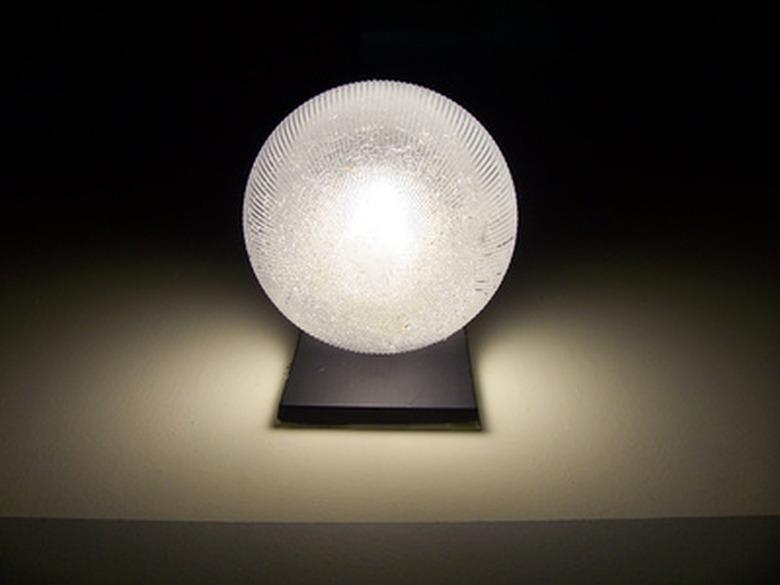How Many Light Fixtures Can Be On 14-Gauge Wire?
Wire cannot carry infinite amounts of current, so the National Electric Code (NEC) poses limits for safe power capacities on each gauge (thickness) of wire. Fourteen-gauge wire meets or exceeds the limits of most household circuits, so your circuit breaker will trip before your power load exceeds the wire's capacity. However, there are exceptions to this, so familiarize yourself with your home's electrical capacity before making any changes to your electrical system.
Load
Lighting fixtures and any other electrical items that draw power from a circuit are called "loads." Technically, the load in your lighting fixture is the light bulb rather than the fixture itself because this is what draws the power. This load is measured in watts, so the number of fixtures your 14-gauge wire can handle is based on the wattage of each fixture's bulb.
Voltage and Amperage
In simplest terms, voltage describes the potential flow of power through your wire based on how much electricity the wire can conduct while the amperage measures how much power actually flows through the wire. Standard household circuits in the U.S. offer 15 or 20 amps at 120 volts. Most households also have one or more high-capacity appliance circuits that operate at 240 volts and 30 or 40 amps, double the capacity of the other home circuits. These 240-volt circuits are used for items like ovens, dryers and workshop tools.
Limitations
The NEC limit for 14-gauge wire is 20 amps, which means you should never use 14-gauge wire in your 240-volt circuits, only your 120-volt circuits, or the amperage will exceed the wire's capacity. Using the basic electrical formula "Watts = Volts x Amps," the wire presents the equation Watts = 120 x 20 with a result of Watts = 2,400. You can load 2,400 watts onto your 14-gauge wiring for a 120-volt circuit.
Calculations
Divide 2,400 by your fixture's maximum bulb wattage if all your intended fixtures are the same. If you have fixtures with different maximum wattage that you want to place on the same wiring, subtract the wattage of your first fixture from 2,400, and subtract the next fixture's maximum wattage from the result. Continue subtracting each fixture until you reach zero or a number lower than the next fixture's wattage, and count the number of fixtures you subtracted, which is the maximum fixture number you can place on your wire.
Considerations
Low-wattage light bulbs, such as CFLs, will increase the number of fixtures you can place on your wire. However, unless you are certain that higher wattage bulbs will never be used in those fixtures — even if you move away from the house — limit the number of fixtures to the figure you calculate from the maximum wattage capacity.
Warning
Do not place 12-volt light fixtures on 120-volt household circuits without a transformer. Low-voltage fixtures will not overload your 14-gauge wire, but the full power from your circuit will damage the fixtures.
